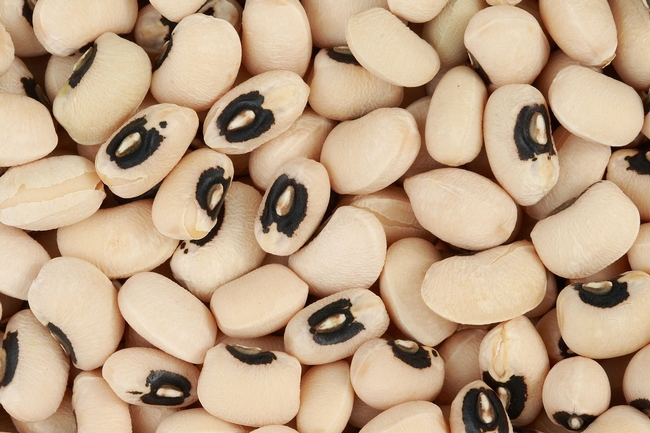
Posts Tagged: dry beans
New UC studies outline costs of producing common dry beans in the Sacramento Valley

The studies focus on production costs in the Sacramento Valley -- Colusa, Sacramento, Solano, Sutter, Yolo and Yuba counties. The two different studies show production costs for growing beans under furrow irrigation on 30-inch beds single cropped, including lima (baby, vine and bush types) and blackeye beans; and double cropped, including light and dark red kidney, canario, large white navy, black turtle, cranberry and miscellaneous varieties.
Each analysis is based upon a hypothetical farm operation using practices common to the region. Input and reviews were provided by farm advisors, researchers, growers, farm accountants, pest control advisers, consultants, and other agricultural associates. Assumptions used to identify current costs for individual crops, material inputs, cash and non-cash overhead are described. A ranging analysis table shows profits over a range of prices and yields. Other tables show the monthly cash costs, the costs and returns per acre, hourly equipment costs, and the whole farm annual equipment, investment and business overhead costs.
These two studies - "Sample Costs to Produce Beans-Common Dry Varieties-Double Cropped in the Sacramento Valley" and "Sample Costs to Produce Beans-Common Dry Varieties-Single Cropped in the Sacramento Valley" - and other sample cost of production studies for many commodities can be downloaded from the UC Davis Agricultural and Resource Economics Department website, http://coststudies.ucdavis.edu. Some archived studies are also available on the website.
For additional information or an explanation of the calculations used in the study contact Karen Klonsky at (530) 752-3589, klonsky@primal.ucdavis.edu or Don Stewart, (530) 752-4651, destewart@ucdavis.edu.
The studies were prepared by Rachael Long, UC Cooperative Extension advisor, Sacramento, Solano and Yolo counties; Mark Lundy, UC Cooperative Extension advisor, Colusa, Sutter and Yuba counties; Karen Klonsky, Cooperative Extension specialist, Department of Agricultural and Resource Economics, UC Davis; and Don Stewart, staff research associate, Department of Agriculture and Resource Economics, UC Davis.
UC Field Day showcases California’s dry-bean research advancements

Dry beans are a big business in California. In 2011, growers harvested 45,000 acres of dry beans valued at $58 million. Lima beans accounted for about 40 percent of this total acreage, with California producing nearly 99 percent of the U.S. domestic supply of dry lima beans.
Why should we be so interested in beans? From a nutritional standpoint, dry beans are a healthy food choice - an excellent source of protein, fiber, vitamins and minerals, plus they’re very low in fat. Organizations such as the American Heart Association, the American Diabetes Association and the USDA’s My Plate all recommend including beans in one’s diet to reduce cholesterol, maintain normal blood sugar and to maintain a healthy weight. The California Dry Bean Advisory Board posts many bean recipes on their website at http://calbeans.org/.
From a production standpoint, beans are a crucial crop for farmers. California growers produce four main classes of dry beans, including limas (large and baby), common beans (such as kidneys, pinks, whites, cranberries and blacks), garbanzos (chickpeas), and cowpeas (blackeye beans). Garbanzo beans are grown as a winter crop, while the others are produced in the summer. California’s dry beans are marketed throughout the world, including Japan, Mexico, Canada, and the United Kingdom. California also grows dry bean seed stock for export to other states and international markets.
In rotation with other crops beans help control weeds, add biomass to the soil via plant matter disked into the ground after harvest, and require relatively few pesticides. In addition, beans, as legumes, fix nitrogen from the air via nitrogen-fixing bacteria that colonize the roots, forming nodules. Cowpeas, for example, fix about 100 pounds of nitrogen per acre, providing most of the nitrogen needs for this crop. Likewise, garbanzo beans require minimal nitrogen inputs for crop production. Economically, beans can enhance the annual farm profitability because common beans and cowpeas can be double-cropped with grains or forage crops, producing two crops in one year.

The participants learned about UC research trials, led by Paul Gepts, professor in the Department of Plant Sciences at UC Davis, focus on dry bean breeding programs for pest and disease resistance, drought tolerance, organic production, and yield and quality increases. “Dry” refers to allowing the beans to fully mature and dry on the plants, as opposed to picking the beans green as a fresh market vegetable.
Many of today’s commercially grown dry beans come from University of California varieties, such as those shown at the UC Field Day. Seed germplasm for different genetic traits are selected from all over the world. The lima bean trial at UC Davis included 56 seed selection entries, the heirloom beans included 25 entries, and cranberries and pink beans had 134 entries. Earlier this year eight advanced line garbanzo entries were tested. UC Davis researchers work with hybrids produced by hand crosses to increase seed yield, quality, pest and disease resistance and plant vigor. They receive funding from a variety of sources including the California Dry Bean Advisory Board and USDA.
As shown from this field day, UC research is leading the way to ensuring that the future of California’s dry bean industry remains strong. These efforts will continue to enhance sustainable farming practices in our state and provide nutritional benefits to consumers.

So, the next time you’re in the produce section of your favorite grocery store, enjoy some California-grown beans. From the field to fork, these beans are the best of the best.
Additional resources:
Blackeye bean production in California, UC ANR publication number 21518.
Common bean production in California, UC ANR publication 8402.

Dry bean field day luncheon at UC Davis. (Photo: Kathy Keatley Garvey)

Bean plant. (Photo: Kathy Keatley Garvey)
